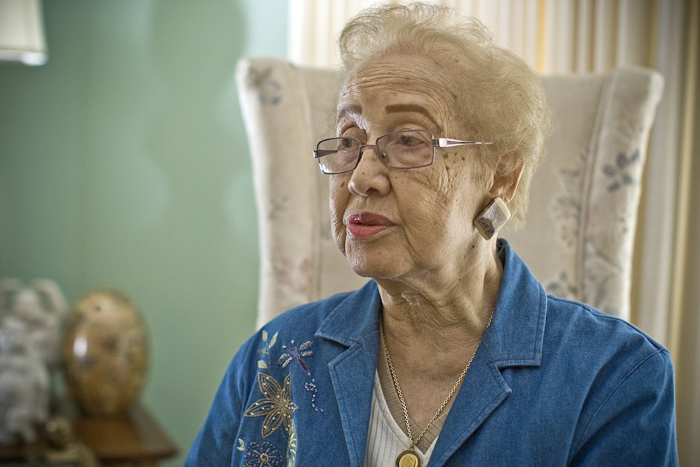Next year this beautiful lady, Katherine Johnson, will turn one hundred. When she was a little girl, her father Joshua used to repeat to her: “You are as good as anybody in this town, but you’re no better”. It was hard to believe you were as good as anybody else for a coloured little girl who had grown up in White Sulphur Springs, where education ended compulsorily with the eighth grade for anybody who was not white. Katherine’s father, Joshua, worked as a farmer and handyman for the Greenbrier Hotel, the thermal resort where the wealthiest squires of all Virginia used to spend their holidays; it was perhaps for this reason that he wanted his daughter to follow her own path without hesitation, in spite of the segregationist barriers. If she wasn’t allowed to study in the small town where they lived, he was going to bring her to Institute, 130 miles further west. Katherine, for her part, sped up the process: at the age of 14 she had already finished high school, at the age of 18 she earned a degree with honours in mathematics. In 1938 the Supreme Court established that “white-only” universities should admit coloured students, therefore in 1939 Katherine became the first African-American woman to attend the graduate school at the West Virginia University in Morgantown. After completing her studies, however, a career was far from being guaranteed. Katherine wished she could take up research, but once again she had to cope with two disadvantages: she was a woman, and on top of that African-American. She taught mathematics for more than ten years, waiting for a good chance which eventually presented itself in 1952. NASA (called NACA at the time) had started to employ both white and African-American mathematics, and offered her a job. Therefore in 1953 Katherine Johnson joined the very first team of the space agency.
She started working in the “computer in skirts” section, a pool of women whose job was to read the data from the black boxes of planes and carry out other mathematical tasks. One day Katherine was assigned to an all-male flight research team; she was supposed to work with them for a limited time, but Katherine’s knowledge of analytic geometry made her bosses “forget” to return her to her old position. But she couldn’t escape segregation. Katherine was required to work, eat, and use restrooms in areas separated from those of her white peers. Regardless of whoever had carried out the work, reports were signed only by the men of the pool. But Katherine had kept in mind her father’s words, and her strategy was to ignore what she was expected to do. She used to participate in the all-male engineering meetings, she signed reports in place of her male superiors, and in spite of any objection. Because she had never thought she was inferior – nor superior – to anybody. That was a pioneering era and participating in the first Space Task Force in history meant venturing in completely new operations and facing unknown issues. With her competence and talent for geometry, Katherine was one of the most brilliant “human computers”. She calculated the trajectory of the first American space flight, the one of Alan Shepard in 1961. Then at some point NASA decided to move on to electronic computers, dismantling the team of “human calculators”; the first flight programmed using the machines was that of John Glenn, who orbited around the Earth. But the astronaut himself refused to leave unless Katherine manually verified all the calculations made by the computers. She was the only one he trusted. Later Katherine helped to calculate the trajectory of Apollo 11, launched in 1969. Seeing Neil Armstrong taking the first step on the Moon moved her, but only to a certain point: for somebody who had been working on that mission for years, this certainly came as no surprise. For a long time, little was known about the work carried out by Katherine (and her colleagues): overlooked for decades by a society that was always reluctant to acknowledge her real value, today her name is studied at school and her story has been recently narrated by the film Hidden figures (2016, directed by Theodore Melfi). The contribution offered by Katherine to the space race is now regarded as essential – although the ones who became heroes were those astronauts who could have never left the Earth soil without her precise calculations. Smiling, about to turn one hundred, Katherine Johnson continues to repeat: “I’m as good as anybody, but no better”.

